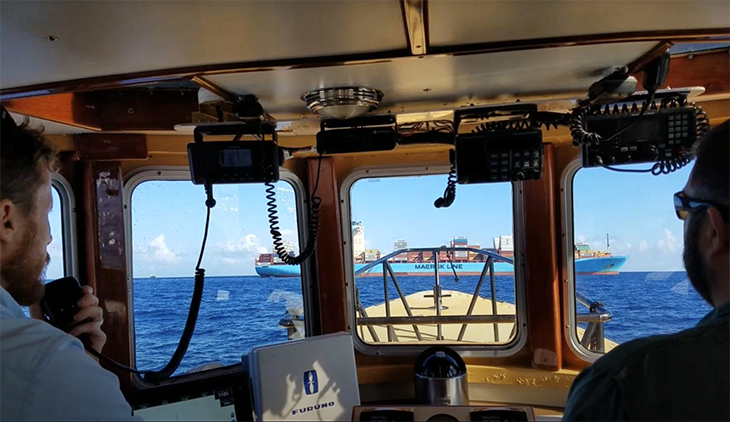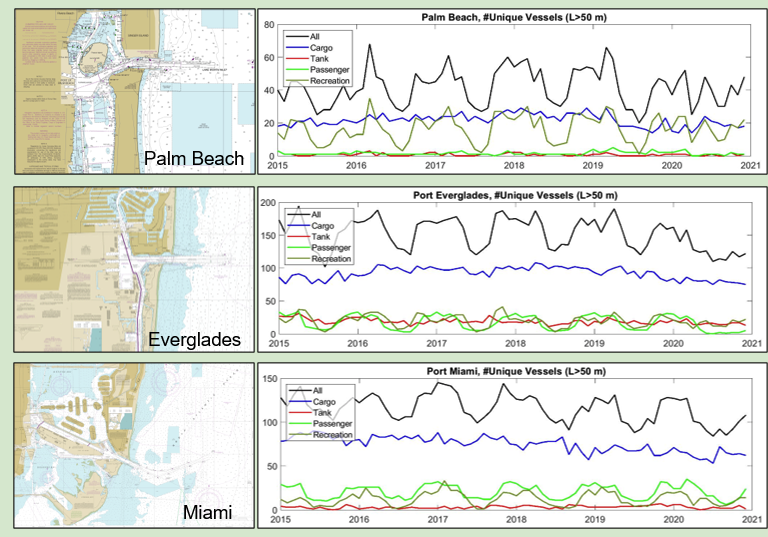Written by: Carlyn Scott, Science Communication Assistant at USF CMS
Ports and container ships have received some attention in the past year vis-a-vis supply chain issues and most notably the Ever Given ship getting lodged in the Suez Canal. Though the magnitude of that event is rare, managing port safety continues to improve thanks to advancements in physical oceanography technology.
Dr. Mark Luther, Director of the Center for Maritime and Port Studies at the College of Marine Science, and Dr. Steven Meyers, the Chief Scientist of the Center, have developed a way to use machine learning to better predict the conditions that are hazardous to ships entering ports.
The duo, funded by SECOORA (Southeast Coastal Ocean Observing Regional Association), developed a prototype algorithm that predicts high cross-currents near south Florida ports. They shared an update on their project in a recent webinar hosted by SECOORA.
“Measurements of currents at the channel entrance have long been a wished-for thing but the technology to do it operationally (i.e. routinely, reliably and at low cost) has only existed for the past 5 years or so,” said Luther.
High cross-currents are unpredictable in both duration – some last hours, others, days - and speed. Cross-currents vary between 15- 120+ centimeters per second. They can be dangerous for large ships entering ports as they enter the narrowly dredged access channels. In the Port of Miami, for example, the channel is 52 feet (16 meters) deep while the average depth outside of the channel is 23 feet (7 meters) – much too shallow for heavy, loaded ships. Cross-currents can push these massive ships out of the channel and into the hard, rocky shallows, damaging a ship and the environment.
How often ships run askew from their intended port entry routes is not well documented, since pilots often don’t publicize their mistakes, said Luther. However, the aspirations toward safety are certainly not new.
The machine learning program has shown promise in predicting conditions hours and days ahead of these hazardous currents, said Meyers.
“These initial results demonstrate the principles on which an operational tool can be developed that will increase domain awareness near south Florida ports,” said Meyers, “and possibly other ports around the world that are similarly subject to meandering western boundary currents.”

